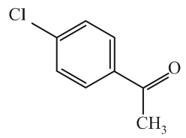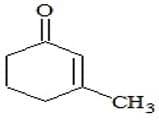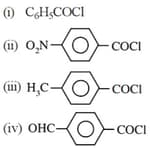Introduction to Aldehydes and Ketones
Introduction to Aldehydes and Ketones: Overview
This Topic covers sub-topics such as Carbonyl Groups, Aldehydes and Ketones, Structure of Carbonyl Group, Nomenclature of Aldehydes and Ketones, Common Names of Aldehydes and Ketones and, IUPAC Names of Aldehydes and Ketones
Important Questions on Introduction to Aldehydes and Ketones
The IUPAC name of the following compound is:

The name of the following organic compound would be:

The carbonyl functional group showing metamerism is
What is the hybridisation of the carboxyl carbon atom of carboxylic acids?
Identify a ketone molecule, among the given compounds.
Identify a compound not having the carbonyl group.
The carbon-oxygen double bond in a carbonyl group is polar due to
Aldehydes can be represented by the general formula
Which isomerism is shown by pentanone?
Write the IUPAC name of the following compound

Which of the following is a tricarboxylic acid?
Consider the following compounds
The correct decreasing order of their reactivity towards hydrolysis is
 is the final product obtained when one of the following is reacted with base.
is the final product obtained when one of the following is reacted with base.
An aromatic compound give 2 moles of and compound On treatment with and . After acidification U gives two mononitro products on nitration.
Compound (T) can also be obtained by ozonolysis of V,in this ozonolysis one mole of is obtained along with (T). Choose the incorrect statement.


are related as:
An organic compound reacts with in presence of phosphorus to produce Q which can be resolved into enantiomers. Q on dehydrobromination yields which does not show stereoisomerism. R on decarboxylation gives an alkene which on further ozonolysis gives S and T. S gives Schiff's test but T does not. The correct identity of these compounds are
IUPAC name of is
Ethanedial has which functional group(s)?
Which of the following statements is true about propanone with respect to bonds,bonds and lone pairs of electrons, respectively?
In , there are non-bonding electron pairs, and and are -

